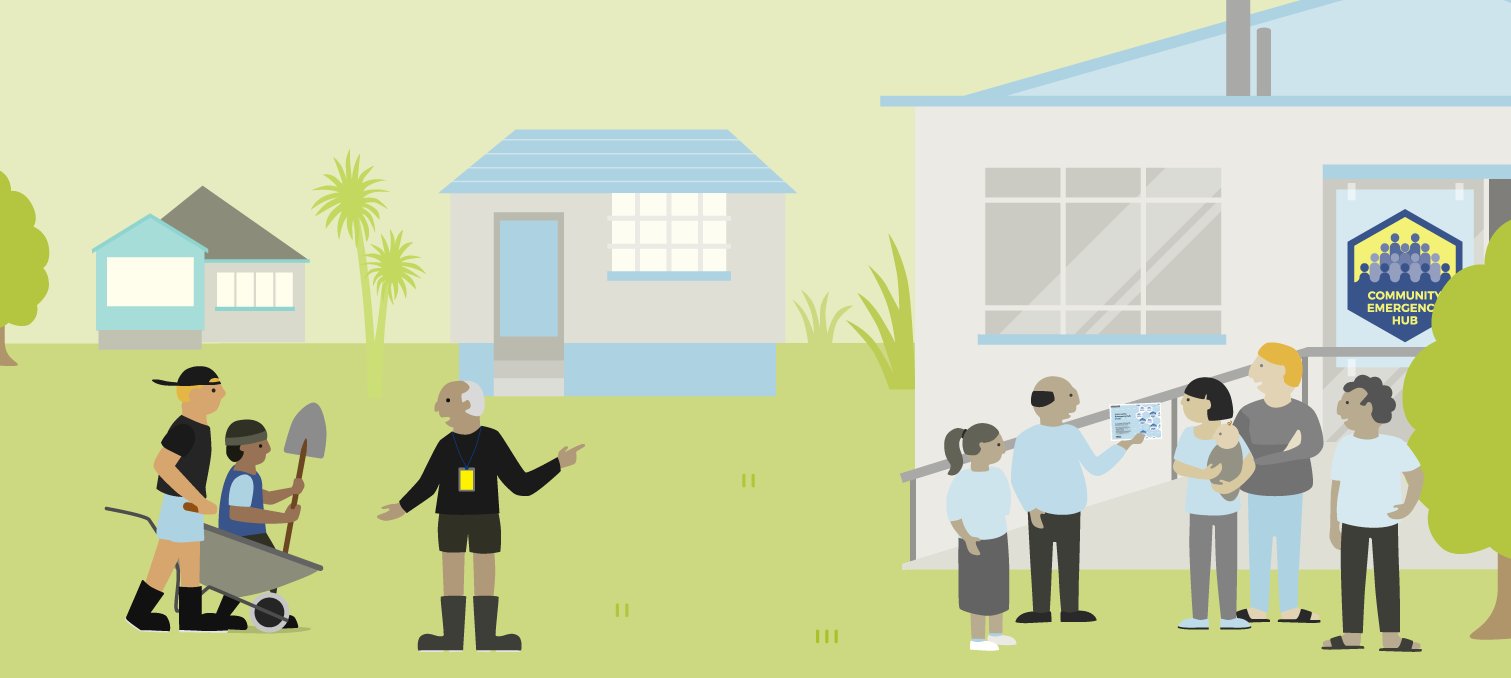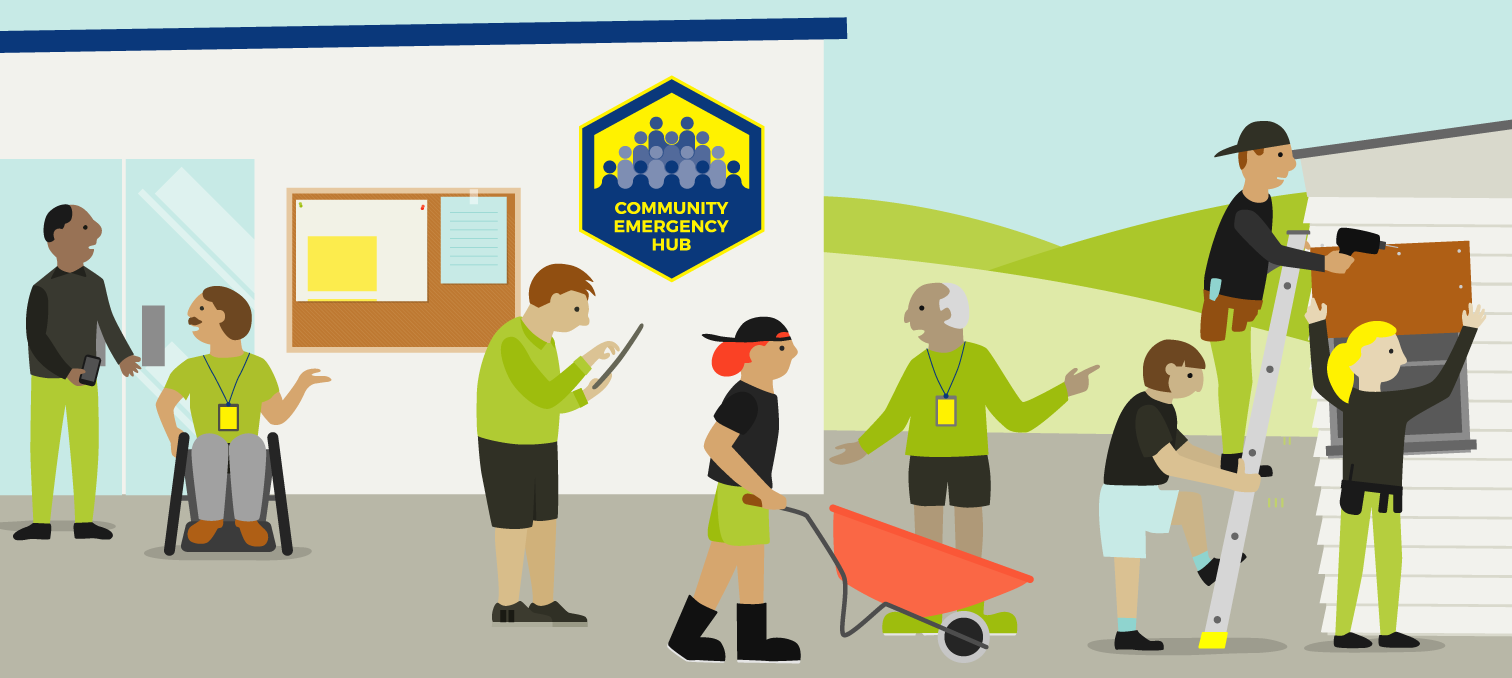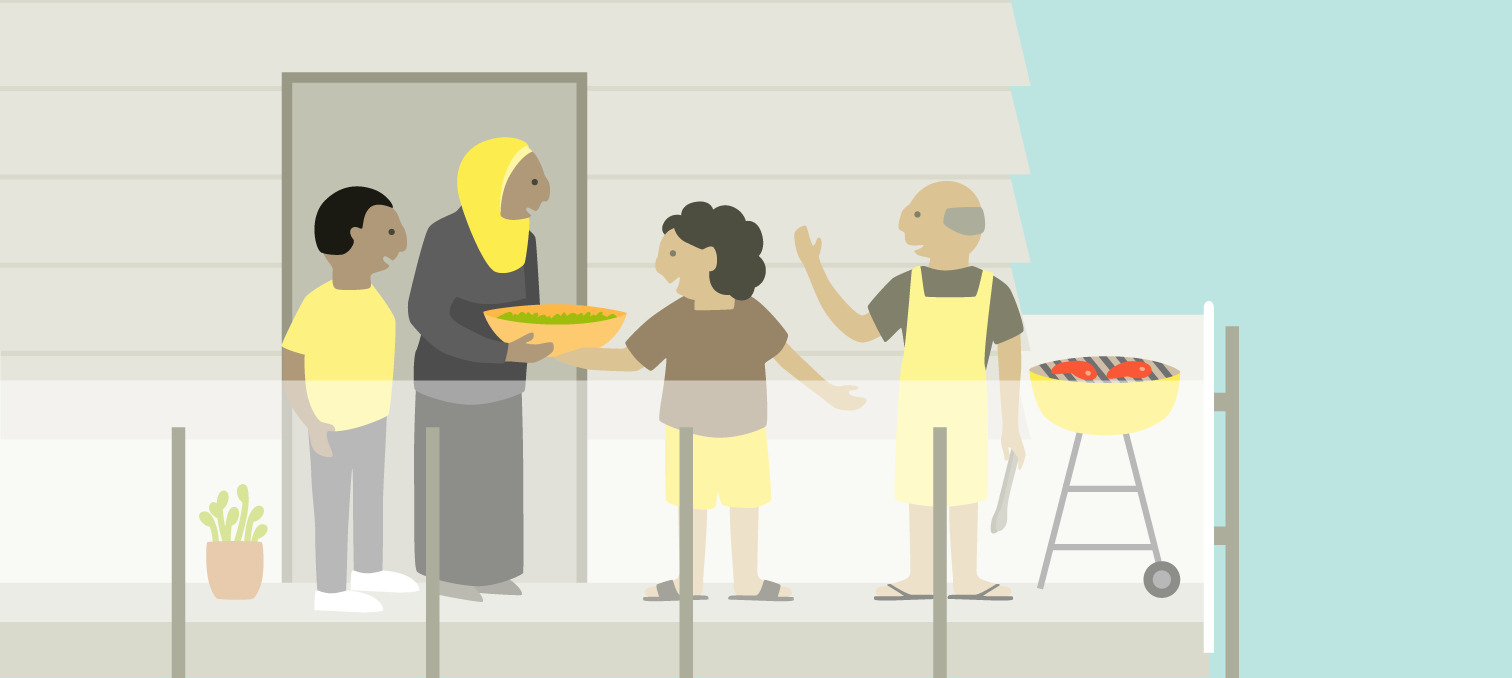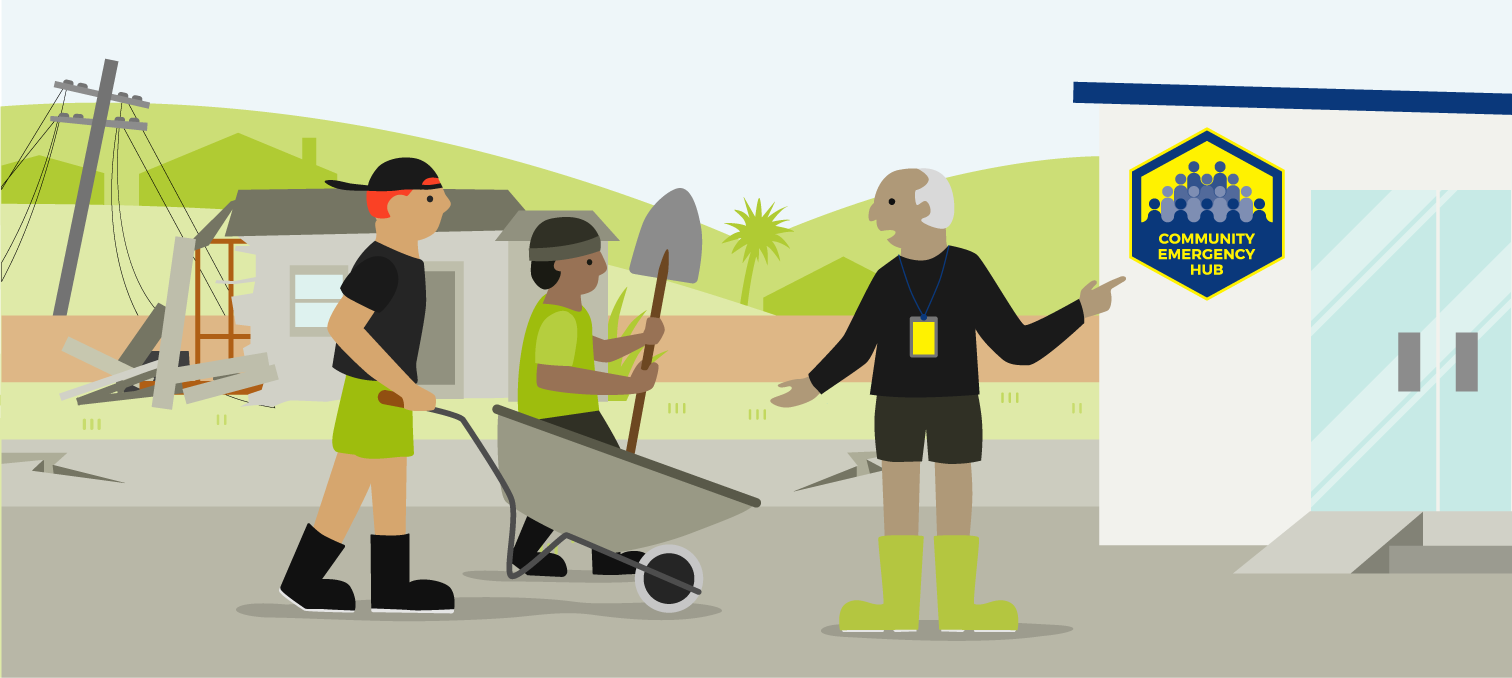

Community Response
During disasters, councils and emergency services aren't the only ones responding. Everyone will have to pitch in and help each other.

Community Emergency Hubs
A Community Emergency Hub is a place where you and your neighbours can go to help each other in a major emergency.

Get to know your neighbours
Your neighbours are your first source of support in an emergency, and it’s important to get to know them.

Get Involved
Community members and volunteer organisations play a vital role in the preparation for, response, and recovery from an emergency.